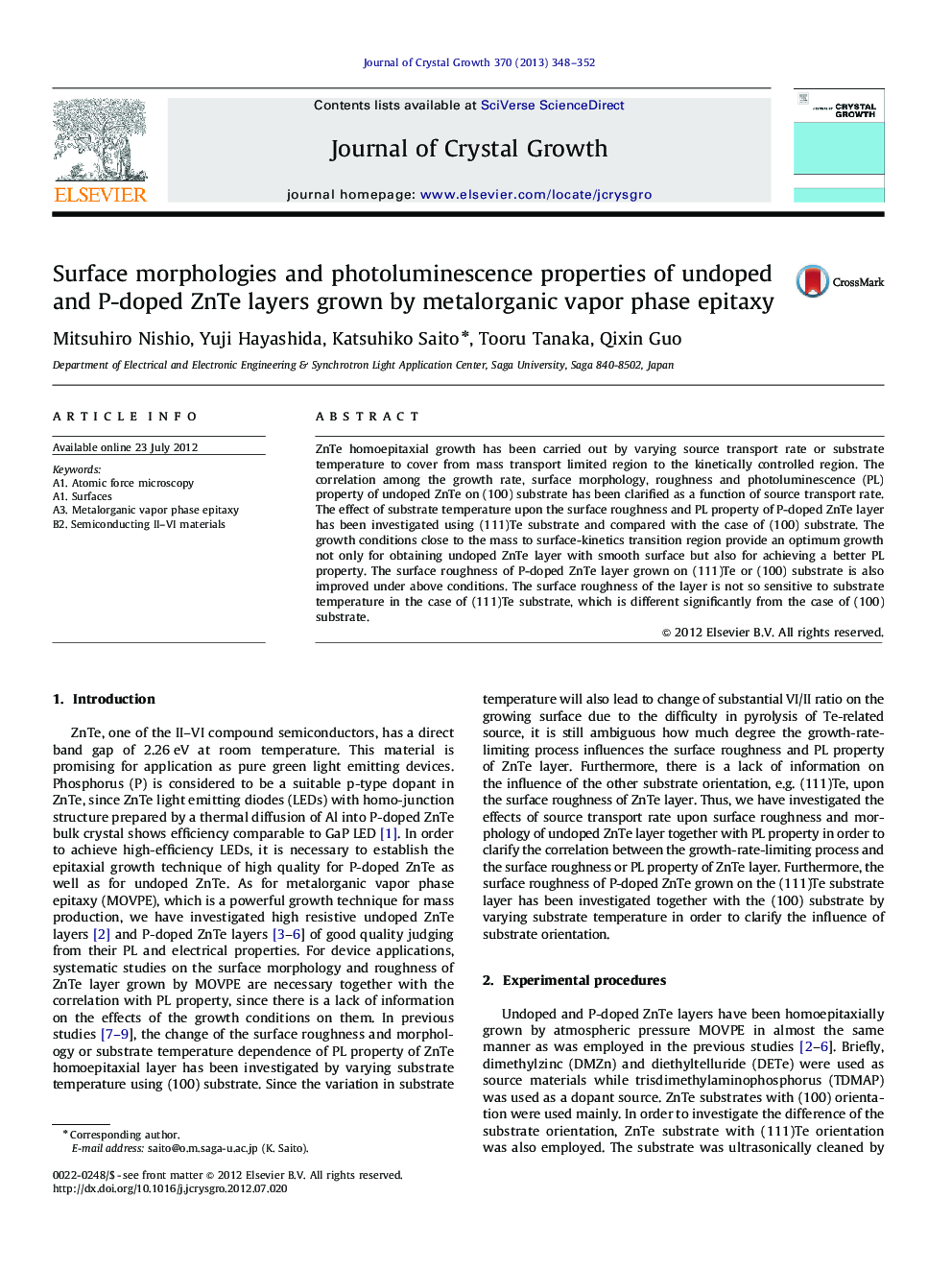| Article ID | Journal | Published Year | Pages | File Type |
|---|---|---|---|---|
| 1791132 | Journal of Crystal Growth | 2013 | 5 Pages |
ZnTe homoepitaxial growth has been carried out by varying source transport rate or substrate temperature to cover from mass transport limited region to the kinetically controlled region. The correlation among the growth rate, surface morphology, roughness and photoluminescence (PL) property of undoped ZnTe on (100) substrate has been clarified as a function of source transport rate. The effect of substrate temperature upon the surface roughness and PL property of P-doped ZnTe layer has been investigated using (111)Te substrate and compared with the case of (100) substrate. The growth conditions close to the mass to surface-kinetics transition region provide an optimum growth not only for obtaining undoped ZnTe layer with smooth surface but also for achieving a better PL property. The surface roughness of P-doped ZnTe layer grown on (111)Te or (100) substrate is also improved under above conditions. The surface roughness of the layer is not so sensitive to substrate temperature in the case of (111)Te substrate, which is different significantly from the case of (100) substrate.
► The relationship between surface flatness and growth regime was clarified. ► The condition close to the mass to surface-kinetics transition region is optimal. ► The optimal condition provides a better optical property for undoped (100) ZnTe layer. ► P doping does not influence the surface morphology.
